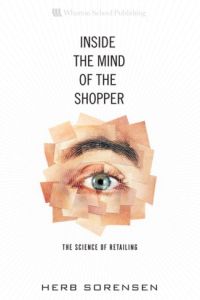Join getAbstract to access the summary!

Join getAbstract to access the summary!
Herb Sorensen
Inside the Mind of the Shopper
The Science of Retailing
Wharton School Publishing, 2009
What's inside?
Companies spend billions getting customers into the store, but what really goes on in the aisles?
Recommendation
Have you ever wondered why the milk is in the back of the grocery store, far away from the entrance? Supermarket managers put it there in hopes of enticing shoppers to buy some of the thousands of items they pass on their way to the dairy case. However, shopping behavioralist Herb Sorensen disagrees with this strategy. He suggests that it causes shoppers emotional distress and they will simply buy their milk elsewhere. This type of product placement tactic is the kind of “misconception” that Sorensen identifies as retailers’ and manufacturers’ biggest problem. They spend billions learning about their customers and then fail to understand how consumers behave in their stores. Sorensen proselytizes heavily about the virtues of shopper research, which is not surprising since it is his field of expertise. Given his intricate factual material, backed with research, charts, statistics and case histories, getAbstract believes that he will persuade most readers to accept his methods by the time they finish his book. This is a crucial read for retailers who aspire to increase sales by understanding what shoppers want and providing it.
Summary
About the Author
Herb Sorensen, Ph.D., is president of TNS Sorensen, a company that specializes in shopping behavior research.

















Comment on this summary